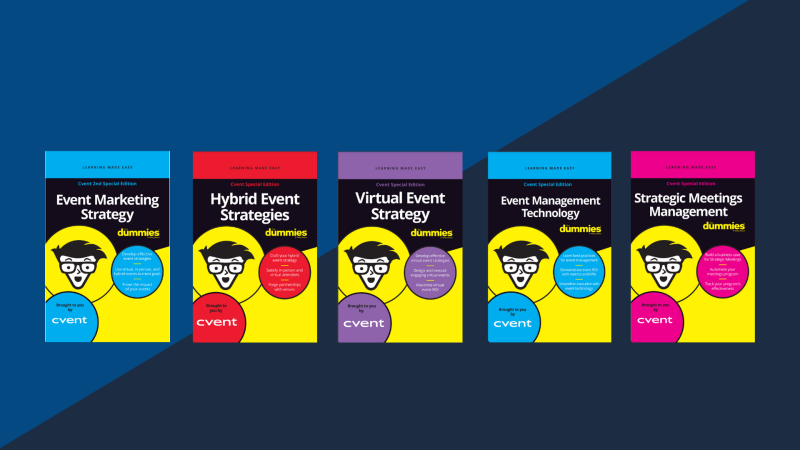Unexpected. Unprecedented. For meeting and event planners, 2020 has been unlike any other year. While you plan every day for the unknown, the “new normal” you’re facing has been met with cancellation, re-scheduling, strong pivots from in-person to virtual events—and that’s just the beginning. As you prepare for the next phase, one thing is for certain: when you’re event planning for the future, there are 6 things to consider right now.
This mind-shift is going to mean adding more action-items that need your attention…and some of them might mean trudging into areas that are unfamiliar. In this post, we’ll touch on many of the areas that should (and will) be on your checklist moving forward, including how new regulations will have a significant impact on your day-to-day planning.
|
Contents |
While this post by no means will be an exhaustive examination of these topics, it’s critical that event planners recognise their importance and keep them in mind as we move closer to hybrid and in-person events in 2021.
New regulations and the new normal
While in-person events will return, they probably won’t be like anything we’ve experienced before. As the industry cautiously begins to find its footing while virtual events continue on, planning for in-person and hybrid events will present a new set of challenges—many of which may be out of your control. Still, being informed will put you in a better position to succeed—and help you sleep a little better at night.
Sourcing in the new normal
Finding the perfect venue just got a little more complex, and the competition is sure to heat up as the summer months go on. This means not only keeping up-to-date with venue availability, and preparing for the unexpected, but also ensuring the venue you choose is the right fit for your organisation with new regulations that vary from state-to-state, and hotel-to-hotel.
Considerations you’ll now face include:
- New Capacities at venues. The space needed for a 250-person event can be drastically different than it was in January. Social distancing means more space may be needed, fewer people can attend in-person, and so on.
- New ways of interacting or different spaces. Will outdoor venues find footing faster than indoor ones? We’ve seen drive-in movies return as a popular form of entertainment, and the restaurants that have re-opened have typically begun to seat outside, with a limit on diners.
- Regional regulations. It’s a tall task, but it’s vital to stay on top of all regions opening up, and how they may all have major, and minor, differences/regulations. For example, you may be able to find that larger events in APAC and Germany open up sooner, while you are still restricted to no more than 25 in other areas across the globe, including the United States.
Travel and the planner: new questions to ponder
Travel is still one of the great unknowns. What used to be a fairly mundane process has become more complex and ultimately, more challenging. Gone are the simple days of trying not to put an executive on a red-eye, or procuring an aisle seat in first class—now most of your concerns will centre on safety. Here a few things to ponder:
- Employee risk/willingness to travel. Keeping employees safe and secure is at the top of the list for all organisations. Will employees be willing to jump back on a plane and travel to a venue to work your events? And if they are, what steps do you need to take to ensure their safety?
- Budget: With an economy in recovery, and an industry on its heels, budget constraints are all-to-real. Doing more with less means having to face not-so-ideal scenarios when choosing travel times, hotels, and the number of staff you can bring to your events.
- How is TSA handling safety? Here’s one that’s out of your control, but one that you need to keep track of. This goes for domestic and international travel. Your attendee experience can and will be greatly affected by the new stressors associated with event travel.
- How are airlines handling safety/cleanliness: Another aspect that you can have little control over—but one that may affect which airline you choose. This could mean your company only being confident in one carrier, which will impact staff and attendees alike.
- Making sure group travel contracts are looked at as flexible with attendee names and credits, and cancellation language: During these uncertain times, work closely with your venue partners to ensure agreeable flexibility.
- Making sure your room blocks have ample attrition. Typically, you try to negotiate a low attrition rate, or ensure that your contract has a mitigation or re-sale clause. In the new normal, attrition is likely to increase as potential attendees realise they may not want to travel after all. Work with your prospective venues.
Onsite logistics for safer events
Once onsite, your event set-up and logistics will be quite different. A few areas to consider:
- Event layout and design. Configure your space differently to allow for social distancing.
- Space requirements. Are you changing your event program size? Or will new human behaviour need to be taken into consideration? The space you needed to run your program in the past may be completely different than the space you need now.
- Interactive technology. Coming out of a health crisis, consider that attendees will be hesitant to use touch screens. How about long lines at check-in or outside of session rooms? You may want to investigate more passive attendance tracking technologies to eliminate the need for people to touch the same screens one after the other.
- Health and safety procedures. Similarly, what are new health and safety measures you may want to be aware of on site? You may think about sanitising stations, equipment cleaning, and an updated venue cleaning schedule that fits in with the venue’s regulations.
- Food and Beverage. Serving styles that limit the spread of germs, such as a decrease to buffets and self-serve options.
- Hybrid events. Explore opportunities to create a virtual option for in-person events for increased accessibility to attendees who may not be willing or able to attend in-person.
- Signage. Use signage to promote healthy choices and inform attendees.
Protecting your investment with insurance
A new focus on event insurance beyond cancellations, earthquakes, tropical storms, and flooding…an unpredictable global pandemic means your alignment with your venue should be tight as a drum when it comes to insuring your event. The truth of the matter is, we’re all uncertain about what may happen next, and this is why planners and organisations are moving cautiously when it comes to their meetings and events. After all, events are a large investment
Procuring pitfalls and solutions
Meeting spend matters for any organisation, whether you're in the Fortune 100 or plan for a small non-profit. Make sure you have a “procurement playbook” at the ready so you can be confident knowing that your venue and vendors are working closely with and meet all of your organisation’s criteria in regard to safety, risk, etc. If you’ve built a relationship with various venues already, you're ahead of the game. Leverage those valuable connections by keeping them in the loop with all of your criteria, because you can be sure that once the flood gates open for in-person events, venues will be slammed.
Mitigating meeting and event risk
You’ve worked hard to get back in the business of in-person events, but is the chance of cancellation on the table? Even in the fall? Assessing all cancellation risk in “high,” “medium,” and “low” categories and meeting with finance, legal, and procurement will ensure you are covered in every scenario. Mark the dates of when those key decision periods are so you can inform and suggest the best move forward plan.
Planning in the new normal
Our “new normal” means a seismic mind-shift in priorities, and that can be overwhelming for planners in an industry still trying to find its footing. What you can do now, is prepare a battle card for the future.
While we couldn’t cover all of this in a single blog post, we’re kicking off our series with this one to help you stay on the right path without missing a beat, so you can confidently manage your events priorities, and frankly, sleep a little bit better at night. Stay tuned for the next post in our series!
For more on this subject, check out Rebuilding Your Event Program After A Crisis.





